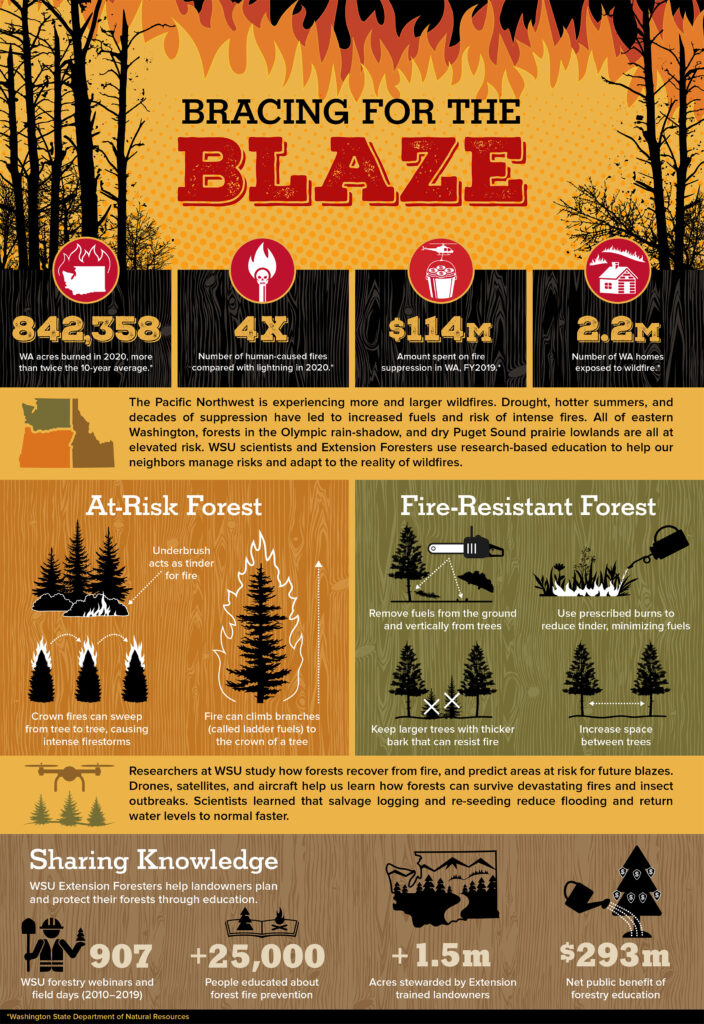The information listed below is part of an infographic titled Bracing for the Blaze, originally published with the WSU Insider story, WSU foresters urge readiness for a dry, early wildfire season.

- 842,358 Washington acres burned in 2020, more than twice the 10-year average*
- Four times the number of human-caused fires compared with lightning in 2020*
- $114 million: amount spent on fire suppression in Washington, FY2019*
- 2.2 million: Number of Washington homes exposed to wildfire
*Washington State Department of Natural Resources.
The Pacific Northwest is experiencing more and larger wildfires. Drought, hotter summers, and decades of suppression have led to increased fuels and risk of intense fires. All of eastern Washington, forests in the Olympic rain-shadow, and dry Puget Sound prairie lowlands are all at elevated risk. WSU scientists and Extension Foresters use research-based education to help our neighbors manage risks and adapt to the reality of wildfires.
At-Risk Forest
Underbrush acts as tinder for fire. Crown fires can sweep from tree to tree, causing intense firestorms. Fire can climb branches (called ladder fuels) to the crown of a tree.
Fire-Resistant Forest
Remove fuels from the ground and vertically from trees. Use prescribed burns to reduce tinder, minimizing fuels. Keep larger trees with thicker bark that can resist fire. Increase space between trees.
Researchers at WSU study how forests recover from fire, and predict areas at risk for future blazes. Drones, satellites, and aircraft help us learn how forests can survive devastating fires and insect outbreaks. Scientists learned that salvage logging and re-seeding reduce flooding and return water levels to normal faster.
Sharing Knowledge
WSU Extension Foresters help landowners plan and protect their forests through education.
- 907 WSU forestry webinars and field days (2010–2019)
- More than 25,000 people educated about forest fire prevention
- More than 1.5 million acres stewarded by Extension-trained landowners
- $293 million net public benefit of forestry education